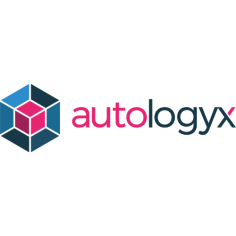Relational data put to work: A tangible example – find out more with Autologyx
In this post we’re looking at the last layer of benefits for the use of relational data structures – a specific use case.
Contract remediation and repapering is a complex and challenging work type and is often broken down into smaller parts due to its complexity. How do relational data models and structure assist in the delivery of an improved end user experience and outcome for the client, beyond enhancing efficiency, accuracy, and compliance?
Here’s how:
Efficient data organisation
Contract remediation and repapering involves reviewing, updating, and renegotiating volumes of contracts. Relational databases provide a structured framework for organising contract data, including key terms, expiration dates, parties involved, and any required amendments. By linking related contracts and clauses, legal professionals can quickly identify dependencies and prioritise remediation efforts, streamlining the overall process.
Streamlined workflow automation
Contract remediation involves a series of tasks, including contract analysis, negotiation, drafting, and execution. Relational databases support workflow automation by enabling the creation of standardised templates, predefined approval workflows, and automated notifications for key milestones. Embracing workflow management and document automation capabilities further streamlines the contract repapering process, reducing manual effort, reducing errors and accelerating turnaround times.
Scalability and adaptability
As the volume and complexity of contracts increase, relational databases offer scalability to accommodate growing data storage and processing needs. Whether repapering a few dozen contracts or thousands of agreements, the relational data model can scale to support the evolving requirements of contract remediation initiatives. Additionally, the flexibility of relational databases allows for seamless integration with third-party systems, such as contract management platforms or electronic signature solutions, to enhance collaboration and streamline contract execution processes.
Comprehensive risk management
Contract remediation often requires identifying and mitigating legal and financial risks associated with outdated or non-compliant contracts. Relational data models facilitate risk assessment by providing a holistic view of contract relationships, obligations, and liabilities. Legal professionals can leverage data analytics and reporting capabilities to identify high-risk contracts, monitor compliance status, and prioritise remediation efforts based on predefined risk criteria.
Security
Contracts are always sensitive, and different levels of access may be needed for different users. Relational databases can provide robust security features, including access controls, to help protect your data.
In summary, relational data structures provide a robust foundation for contract remediation and repapering initiatives. By facilitating efficient data organisation, ensuring accuracy and consistency, enabling workflow automation, supporting risk management, and offering scalability and adaptability, relational databases empower legal professionals to effectively navigate the complexities of contract remediation while mitigating risks and ensuring compliance with regulatory standards.
We hope you enjoyed our blog series aimed at demystifying and making sense of relational data on multiple levels.
1. Unlocking workflow automation: Relational data’s vital role
2. Legal process automation: enabled by relational data
Look out for our upcoming ebook containing all three articles for easy reference and sharing.



